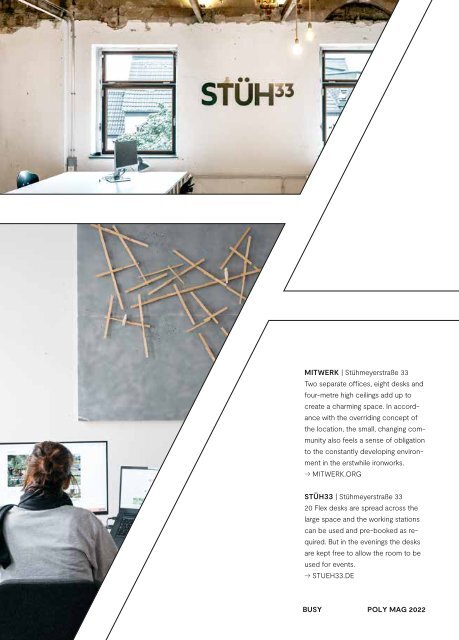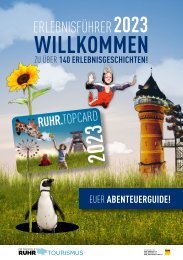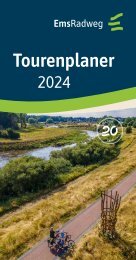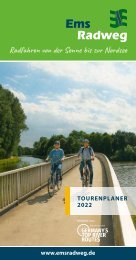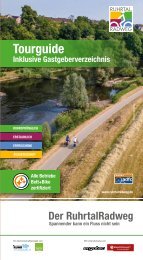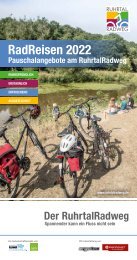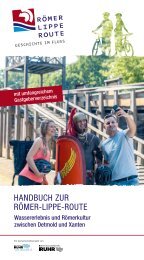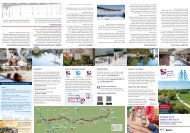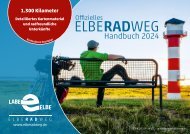Magazin „POLY“ - Free Guide 2022
Das englischsprachige Magazin „Poly“ führt durch das gesamte Ruhrgebiet und beleuchtet Kunst, Musik, Design und Gastronomie. Dazu gibt es Tipps, Empfehlungen und Einblicke in die kulturelle Landschaft der Metropole Ruhr. Magazine „POLY“ - Free Guide 2022 (english) One single city? No, lots of towns and cities. The Ruhrgebiet is often called "the city of cities". "Poly" will tell you how different they are and what they have in common. But most of all we want you to show you one thing: a constantly changing cultural scene and its transformative influence on the environment. For this is the motor behind new developments an radical changes. Poly leads through the Ruhr area and highlights art, music, design and gastronomy.
Das englischsprachige Magazin „Poly“ führt durch das gesamte Ruhrgebiet und beleuchtet Kunst, Musik, Design und Gastronomie. Dazu gibt es Tipps, Empfehlungen und Einblicke in die kulturelle Landschaft der Metropole Ruhr.
Magazine „POLY“ - Free Guide 2022 (english)
One single city? No, lots of towns and cities. The Ruhrgebiet is often called "the city of cities". "Poly" will tell you how different they are and what they have in common. But most of all we want you to show you one thing: a constantly changing cultural scene and its transformative influence on the environment. For this is the motor behind new developments an radical changes.
Poly leads through the Ruhr area and highlights art, music, design and gastronomy.
- No tags were found...
You also want an ePaper? Increase the reach of your titles
YUMPU automatically turns print PDFs into web optimized ePapers that Google loves.
MITWERK | Stühmeyerstraße 33<br />
Two separate offices, eight desks and<br />
four-metre high ceilings add up to<br />
create a charming space. In accordance<br />
with the overriding concept of<br />
the location, the small, changing community<br />
also feels a sense of obligation<br />
to the constantly developing environment<br />
in the erstwhile ironworks.<br />
→ MITWERK.ORG<br />
STÜH33 | Stühmeyerstraße 33<br />
20 Flex desks are spread across the<br />
large space and the working stations<br />
can be used and pre-booked as required.<br />
But in the evenings the desks<br />
are kept free to allow the room to be<br />
used for events.<br />
→ STUEH33.DE<br />
artists also have their studios here, and the owner<br />
of the KRTLND café, Markus Schlichtherle, runs a<br />
recording studio that is well-known in German pop<br />
circles. “Sowatorini” is the name of the landscape<br />
architects’ office that operates on an axis between<br />
Bochum and Berlin, because one of Sebastian Sowa’s<br />
partners is called Gianluca Torini, who runs the Berlin<br />
office. The organic fashion label “Frau Misoke” has<br />
set up shop in a backroom of Sowatorini’s Bochum<br />
branch, and architecture students are also busy<br />
tweaking their models at the large wooden table.<br />
Sebastian Sowa, who works on projects<br />
and wins architecture awards all over Germany<br />
and beyond, is pleasantly surprised by what is<br />
happening in his immediate neighbourhood. In<br />
front of the KoFabrik, for example, there will<br />
soon be a restricted-traffic<br />
zone with a new road surface.<br />
“The city is also generally very<br />
open-minded about structural<br />
changes in the area.” The<br />
council is probably happy to<br />
let the Kortländer Kiez develop<br />
into a creative quarter by itself<br />
without any official designation<br />
or large-scale promotion – and<br />
is helping as much as it can to<br />
further developments.<br />
A place like the KoFabrik must<br />
be a dream come true for all<br />
urban planners. This amazing<br />
project is housed in a building<br />
steeped in history on the corner<br />
of the street called “Am Kortländer”.<br />
The old brick building once housed the<br />
Heintzmann iron foundry, where the legend-ary<br />
Bochum theatre director Peter Zadek established<br />
his outdoor venue, BO-Fabrik, in the 1970s. In the<br />
1980s it was occupied by squatters, and most recently<br />
it was a day centre for the homeless. Now<br />
it’s been turned into a thriving neighbourhood and<br />
co-working centre.<br />
Everyone meets up in the neighbourhood<br />
centre: advertisers, the operators of a<br />
studio for “sustainable innovations”, artists,<br />
graphic designers, video makers, language course<br />
providers, café owners and yoga teachers, not<br />
forgetting the social worker responsible for the<br />
neighbourhood. “We want to be a place for the<br />
neighbourhood, not simply a tenant in a shared<br />
“We want to<br />
be a place<br />
for the<br />
neighbourhood,<br />
not simply a<br />
tenant<br />
in a shared<br />
office.”<br />
Henry Beierlorzer, managing<br />
director of KoFabrik<br />
office. Every-one here is committed to putting<br />
in time for the neighbourhood”, says managing<br />
director Henry Beierlorzer, explaining the project,<br />
which has received funding from organisations<br />
like the Montag Foundation, which supports<br />
non-profit, urban spaces.<br />
At some point during the meetings of the people<br />
involved in the KoFabrik the term “Little Warsaw”<br />
comes up. That was the old name for the<br />
neighbourhood, recalls one of the workers in<br />
the advertising agency. The reason is clear when<br />
you realise that many of the Polish workers who<br />
flocked to the Ruhrgebiet from 1870 onwards<br />
settled here, thereby making Bochum the centre<br />
of “Ruhr Poland”. The Robotników workers’ bank,<br />
the Polish Trades Union Association “Zjednoczenie<br />
Zawodowe Polskie”<br />
and a branch of the “Kasa deposytowa”<br />
bank, to name but a<br />
few, were located on the street<br />
“Am Kortländer”. These institutions<br />
no longer exist, but since<br />
1947 the so-called “Dom Polski”<br />
(Am Kortländer 6) has housed<br />
the Federal Headquarters of<br />
the Union of Poles in Germany.<br />
The building is currently being<br />
renovated to house the Porta<br />
Polonica Documentation Centre<br />
with the aid of funds from the<br />
federal government and the<br />
NRW Foundation.<br />
Some of the people from<br />
different cultural backgrounds<br />
who meet up in the evenings on Herner Straße for<br />
craft beer, table tennis or underground art exhibitions<br />
in the pub that is simply called “Trinkhalle”,<br />
have Polish-sounding surnames. Many of them<br />
may have just emerged from the Iskandar barbershop<br />
across the street – the final astonishing Kiez<br />
phenomenon that I shall briefly highlight here.<br />
Ihab Iskandar has been trimming hair since 2012.<br />
His customers include football stars from rival<br />
clubs like Schalke, Borussia Dortmund and VfL<br />
Bochum, as well as the rapper Capital Bra. Why<br />
them exactly? “I can’t say,” says Ihab Iskandar.<br />
“Maybe they just notice how much I love my work<br />
and that everyone is treated equally here. The<br />
celebrities love the fact that they don’t enjoy any<br />
special treatment.”<br />
BUSY<br />
POLY MAG <strong>2022</strong> POLY MAG <strong>2022</strong><br />
BUSY<br />
13


